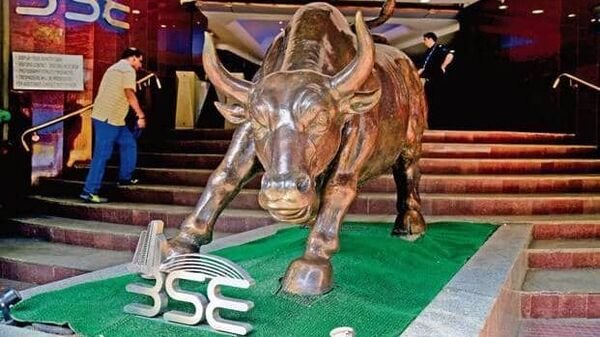Robust FPI inflows fuel gains in stocks

The percentage of Nifty 500 stocks trading above their 200-day moving averages (DMA), a measure of investor interest, stands at 73% as of 28 June, beating the 69% figure of the previous rally that lasted almost six months through 1 December.
Any stock trading above its 200-DMA is considered to be in a bullish trend, and below it in a bearish trend. The 200-DMA is the average closing price of a security over 200 days. While the percentage of stocks trading above the 200-DMA is lower than the 91% at the end of the 20-month rally until October 2021, the market has tested a new high in a much shorter span of three months.

View Full Image
“The rally is more broad-based, and the momentum will sustain,” said Raamdeo Agrawal, chairman of Motilal Oswal Financial Services. “Financials will continue to perform well against the backdrop of the merged HDFC Bank. We should see earnings growth of 15-20% in banking names in FY24, which will be a year money is made.”
Some market experts expect the rally to become even more broad-based, given the favourable technical and fundamental factors and the lengthening odds of a US recession. They expect the next leg of the rally to be led by banking stocks following the imminent merger of HDFC into and with HDFC Bank on 1 July.
“The rally is more broad-based and the momentum will sustain,” said Raamdeo Agrawal, the chairman and co-founder of Motilal Oswal Financial Services Ltd (MOFSL). “Financials will continue to perform well against the backdrop of the merged HDFC Bank. We should see earnings growth of 15-20% sustain in banking names in FY24, which will be a year money is made, unlike in the past fiscal.”
“Bank Nifty has underperformed (since May-end) and is poised to lead the rally into July on the back of the HDFC merger,” said Jaykrishna Gandhi, head of business development for institutional equities at Emkay Global Financial Services. “In our view, till 18,450 on Nifty holds, the market bias will remain on the upside… only if 18,450 is broken will there be a trend reversal in the market.”
Gandhi suggested that the US economy could have a soft landing despite the possibility of further interest rate hikes.
“The US markets continued the positive data with consumer confidence in June climbing to the highest levels since January 2022, new home sales in May jumped 12.2% to the highest levels since February 2022, and lastly, home prices were up 0.9% in April for the top 20 cities in the US. The above data makes a case that while there might be another rate hike, the odds of a recession are reducing, making way for a soft landing,” he added.
Another positive aspect of the current rally is the higher FII (foreign institutional investor) inflows of ₹95,749 crore during March-June 2023 compared to ₹34,597 crore during June-December 2022. The monthly average FII inflows have also reached a new high of ₹23,937 crore, surpassing the ₹5,766 crore average in the last rally and ₹10,352 crore in the one between March 2020 and October 2021. However, domestic institutional investor (DII) inflows have been lower at ₹32,720 crore than ₹96,073 crore in the previous rally.
“The present rally has been more broad-based than the past rally and is impressive even in the face of the one before the last rally, given the relatively shorter period,” said Rohit Srivastava, the founder of analytics firm IndiaCharts.
The rally during March 2020–October 2021 saw the Nifty rally 148% from a low of 7,511.1 due to the pandemic to a high of 18,604.45. The next rally between June and December last year saw the market gain 24.4% from a low of 15,183.4 to a high of 18,887.60. The present rally from March has driven up the Nifty 14% from a low of 16,828.3 to a record high of 19,201.70 on 30 June.
Know your inner investor
Do you have the nerves of steel or do you get insomniac over your investments? Let’s define your investment approach.
Take the test
Download Finplay News App to get Daily Market Updates.
More
Less
Updated: 02 Jul 2023, 11:28 PM IST
